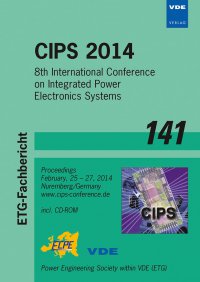Microstructural study of the fatigue mechanism of aluminum cladded copper wires
Conference: CIPS 2014 - 8th International Conference on Integrated Power Electronics Systems
02/25/2014 - 02/27/2014 at Nuremberg, Germany
Proceedings: CIPS 2014
Pages: 6Language: englishTyp: PDF
Personal VDE Members are entitled to a 10% discount on this title
Authors:
Naumann, Falk; Maerz, Benjamin; Klengel, Robert; Schischka, Jan; Petzold, Matthias (Fraunhofer Institute for Mechanics of Materials IWM, Halle, Germany)
Abstract:
Increasing challenges in the area of reliability of thermo-mechanically loaded electrical devices in automotive and power electronic components have led to the introduction of new interconnection technologies and materials. With respect to heavy wire bonding, new solutions based on innovative copper or aluminum-cladded copper wires have been presented and show significant potential for enhancing the lifetime of interconnections. However, newly observed lifetime-determining failure modes and types of damage evolution can differ significantly from those known from common aluminum wire bonding materials. Therefore, the present work gives an overview of observed defect processes and failure mechanisms by heel cracking in Al/Cu composite bond wires after thermally and mechanically fatigue experiments. In detail, the microstructure of the thermally and mechanically cycled specimens was analyzed using scanning electron microscopy (SEM) in combination with focused ion beam (FIB) preparation to investigate potential defect mechanisms. Identified micro-cracks formed at the cladding interface in the vicinity of the solid-state Cu/Al intermetallic phases (IMP) were analyzed by transmission electron microscopy (TEM) investigations in order to evaluate their relevance for fatigue mechanisms. Comparing the defect mechanisms and the local loading intensity calculated by the use of finite element analyses, a deeper insight into the failure mechanisms and failure modes for heel crack formation can be given.


